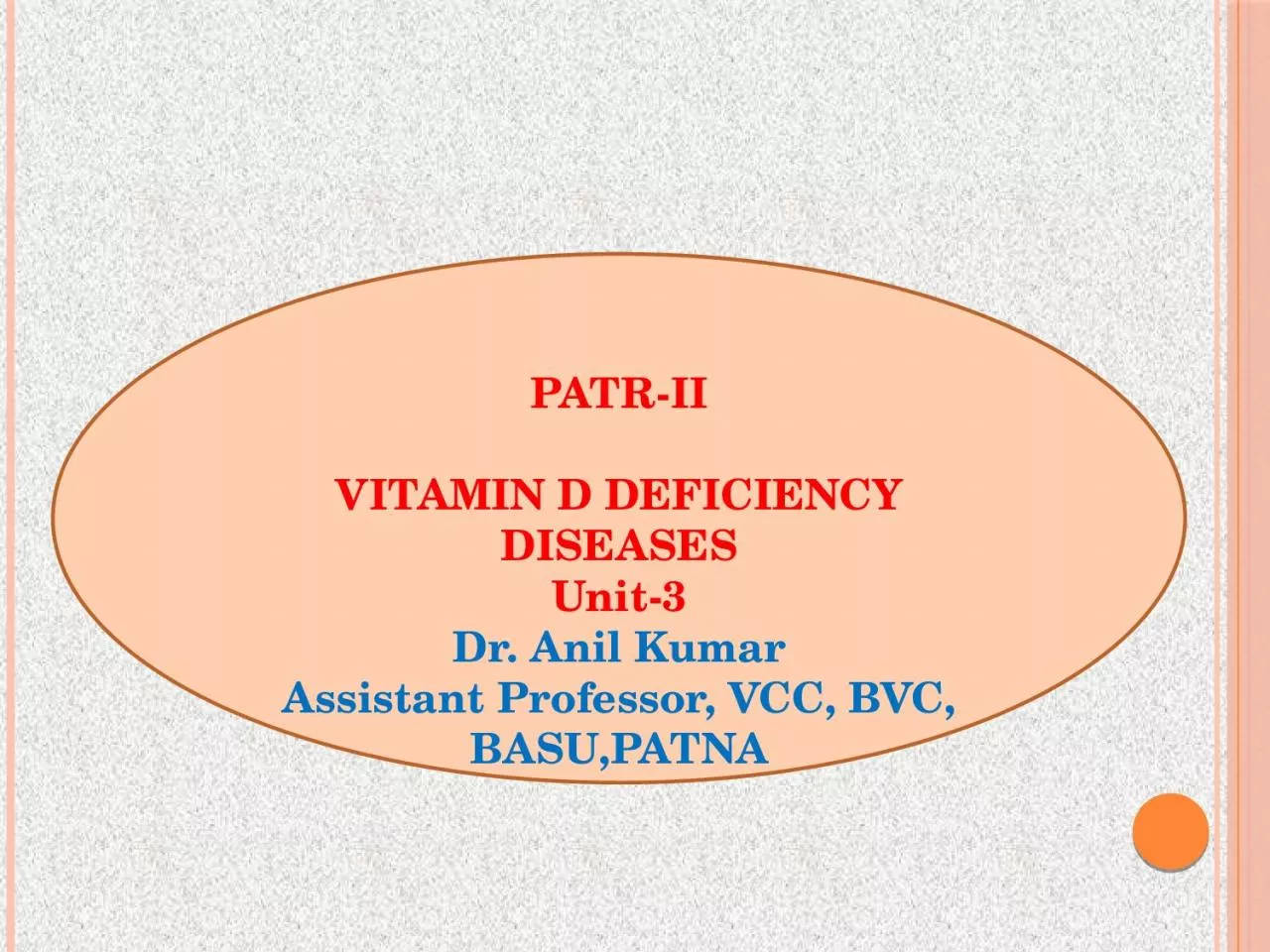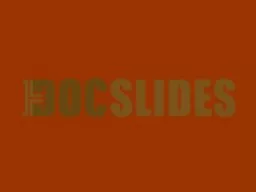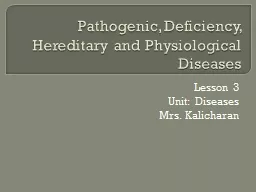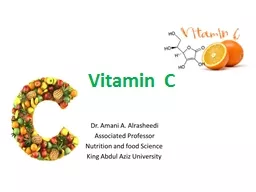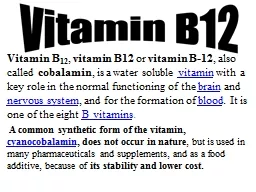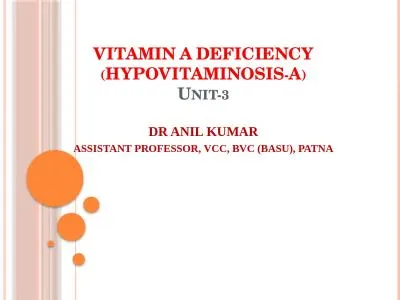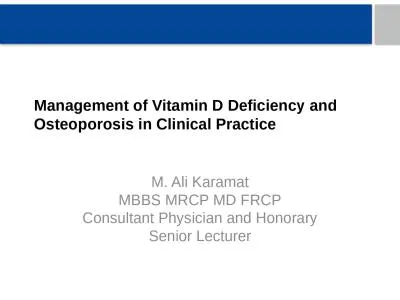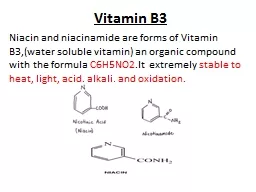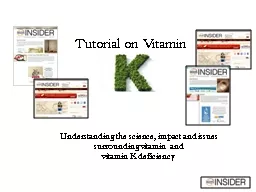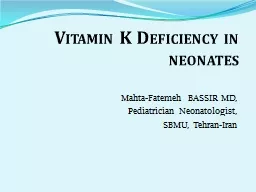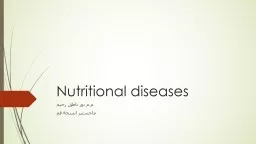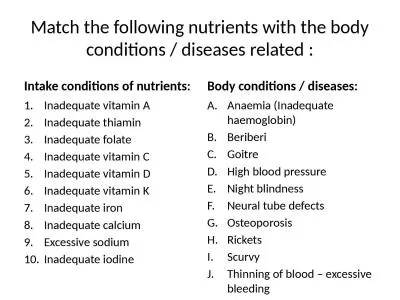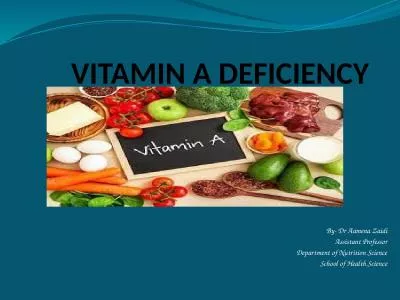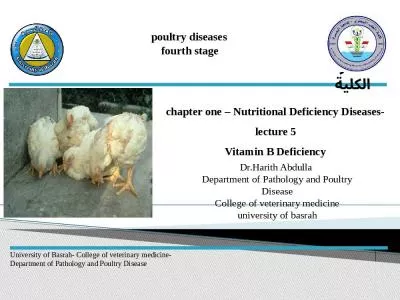PPT-PATR-II VITAMIN D DEFICIENCY DISEASES
Author : joanne | Published Date : 2024-03-13
Unit3 Dr Anil Kumar Assistant Professor VCC BVC BASUPATNA Rickets is a disease of young growing animals caused by impaired mineralization of physeal and epiphyseal
Presentation Embed Code
Download Presentation
Download Presentation The PPT/PDF document "PATR-II VITAMIN D DEFICIENCY DISEASES" is the property of its rightful owner. Permission is granted to download and print the materials on this website for personal, non-commercial use only, and to display it on your personal computer provided you do not modify the materials and that you retain all copyright notices contained in the materials. By downloading content from our website, you accept the terms of this agreement.
PATR-II VITAMIN D DEFICIENCY DISEASES: Transcript
Download Rules Of Document
"PATR-II VITAMIN D DEFICIENCY DISEASES"The content belongs to its owner. You may download and print it for personal use, without modification, and keep all copyright notices. By downloading, you agree to these terms.
Related Documents

